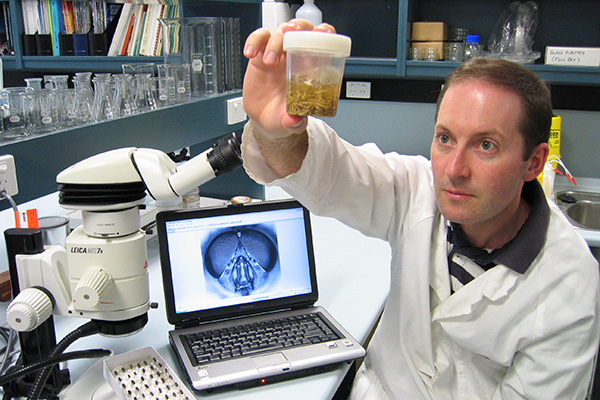July 16, 2014
UOW scientist’s evidence to high-profile murder trial
A forensic entomologist from UOW gave scientific evidence during the high-profile Baden-Clay murder trial.
Former real estate agent Gerard Baden-Clay was found guilty in the Brisbane Supreme Court on 15 July of murdering his wife Allison and sentenced to life imprisonment.
Associate Professor James Wallman from UOW’s School of Biological Sciences has been a forensic entomologist since the 1990s.
Police gave samples to Professor Wallman of insects found on Allison’s body, which he was asked to identify and use to provide a minimum time since her death.
He was also asked whether he could tell whether Allison's body had been submerged in Kholo Creek where she was found.
Professor Wallman was given the specimens on the afternoon of April 30, 2012, and provided evidence by telephone last month to the court case.
He told the trial that he received plastic containers holding a number of insect varieties, including fly eggs, a large number of maggots, adult flies and two adult beetles.
He said that in order to identify a time of death he first needed to identify the samples, because different types of flies had different rates of development.
“A fly has a life cycle involving the mother fly being attracted to a substance onto which she will be able to have her offspring sustained, either eggs or live maggots,” he told the trial.
“In all of the flies in this case we are dealing with egg-laying flies. The eggs having been laid on the substrate will then start to develop and the eggs will hatch into a first stage maggot and the second stage into a third stage . . .”.
He said the third stage fly larvae would develop a hardened case or shell and would eventually break out of it as a fly.
He told the trial that a number of species among those represented before the Supreme Court had reached the third stage of growth.
“That implies that a certain amount of time had transpired, a longer amount of time indeed if there had only been first or second stage maggots present.
“The amount of time could only be determined accurately if we know the temperature of the conditions in which the maggots were growing.”
He said it implied at least three or four days would have elapsed if the temperature was high.
Professor Wallman said if the temperature had been lower, the fly growth would have slowed and more time would have passed.
He said the insect activity was consistent with Allison Baden-Clay having been dead for 11 days.
Professor Wallman said he could not reach a conclusion one way or another on whether the body had been submerged.
